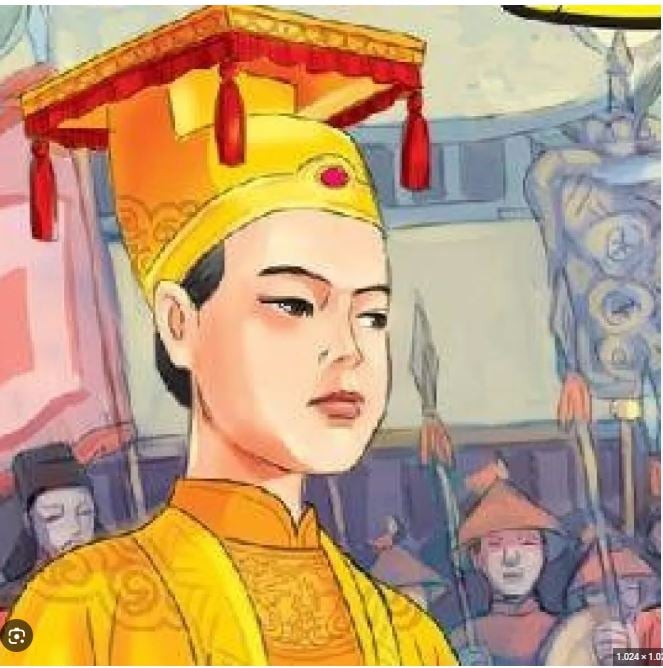The history of Vietnam records that although a man did not become king, his 3 sons were each made kings with different destinies. Who was he?
The man who did not become king but has the most sons who became kings
Nguyen Phuc Hong Cai (1845 – 1876), with the regnal name Kien Thai Vuong, was the prince and younger brother of King Tu Duc of the Nguyen Dynasty. He is known as the father of 3 consecutive kings of the Nguyen Dynasty – Kien Phuc (Nguyen Phuc Ung Dang), Ham Nghi (Nguyen Phuc Ung Lich), and Dong Khanh (Nguyen Phuc Ung Ky). Since Tu Duc had no children, Hong Cai adopted these 3 nephews as his own. The destinies of these 3 sons were very different. In Hue, the people sang, “One family gives birth to three kings, One king still reigns, one king dies, one king flees far away.”
+ King Kien Phuc
King Kien Phuc (1869 – 1884), whose real name is Nguyen Phuc Ung Dang, was the 7th emperor of the Nguyen Dynasty. In 1883, at the age of 14, Ung Dang ascended to the throne but died suddenly 8 months later. There are different theories about his death, such as dying from illness or being poisoned. He became the shortest-lived monarch in the feudal era of the Nguyen Dynasty, dying at the age of 15 without a formal coronation and without leaving any descendants.

Nguyen Phuc Hong Cai (1845 – 1876), with the regnal name Kien Thai Vuong, was the prince and younger brother of King Tu Duc of the Nguyen Dynasty (illustrative image) (source:internet)
+ King Ham Nghi
King Ham Nghi ascended the throne in August 1884 but less than a year later, the capital city was captured. Ton That Thuyet took King Ham Nghi and his entourage out of the city of Hue to the mountainous Tan So (Quang Tri). Here, the king called for the support of the people to resist the French colonizers.
In Quang Tri for a period of time, to avoid intense pursuit by the French army, Ton That Thuyet took King Ham Nghi and the entourage away from Tan So, traversing Laos to the mountainous region of Au Son (Huong Khe, Ha Tinh). However, in September 1888, he was betrayed by Nguyen Dinh Tinh and Truong Quang Ngoc, and was handed over to the French army.
+ King Dong Khanh
When Nguyen Phuc Ung Ky ascended the throne of Dai Nam, contrary to the usual practice, a new king would proclaim his regnal name. But Ung Ky still used the regnal name Ham Nghi, the name of the previous king and also his own younger brother, in official documents and decrees.
In this unusual situation, court officials sought an audience with Queen Mother Tu Du to ask for her opinion on the matter of the king giving himself a regnal name. The essential content of the Dong Khanh book states, “Before that, court officials held discussions and followed the suggestions of Queen Mother Tu Du, who said that the King had been on the throne for over a month, but still held the regnal name Ham Nghi, causing doubts among the people. Therefore, it was proposed to immediately use the regnal name Dong Khanh to stabilize people’s hearts without waiting until next year… The King agreed and copied the suggestions and the draft decree of the court that was distributed inside and outside the palace.”
Which Vietnamese king had the most children?

During his lifetime, King Minh Mang had a total of 142 children, including 78 princes and 64 princesses.
Minh Mang is known as one of the most capable rulers in the history of feudal Vietnam. Under his reign, the Nguyen Dynasty built a strong nation that commanded the respect of other countries.
Not only known as a strict and capable ruler, Minh Mang also had the most children among the kings of the Nguyen Dynasty. During his lifetime, King Minh Mang had a total of 142 children, including 78 princes and 64 princesses. King Minh Mang of the Nguyen Dynasty had many wives and was famous for a medicine that could impregnate 5 women in one night. King Minh Mang derived the most enjoyment in the realm of the bedroom among the Nguyen kings. The number of concubines who had children with him was 43, but according to many sources inside the palace, there were 500-600 people. Most of his wives were from the South. King Minh Mang died on December 28, 1841, at the age of 50, after a reign of 21 years. His tomb is still preserved almost intact in Huong Tra district, Thua Thien Hue province.



































